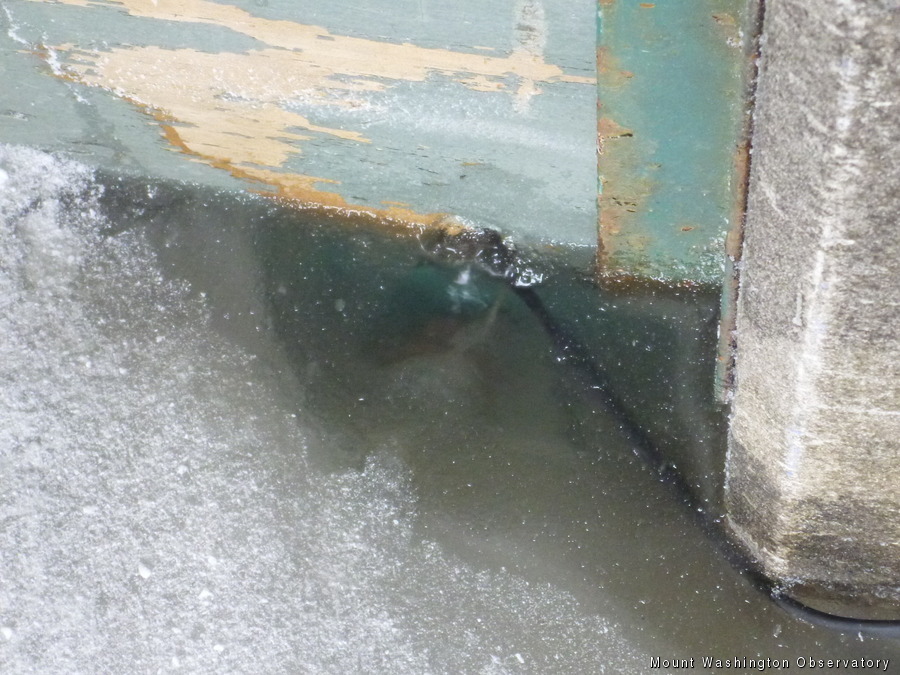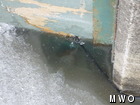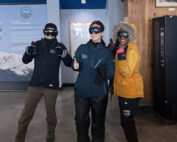‘January Thaw’
2014-01-12 11:02:41.000 – Samuel Hewitt, Summit Intern
Water Continues To Drain From Yesterday’s Rain
Some meteorologists refer to weather phenomenon that occur on or near a certain date as a ‘singularity’. The most common temperature singularity is known to most as the ‘January Thaw’, a period of anomalous warming in the northeastern United States which normally occurs from mid-to-late January. What sets this singularity apart from most is that it occurs during the second coldest month of year for this region. An article by Godfrey et al. 2002 investigated the thaw, performing a statistical analysis in order to try and disprove its existence. They concluded that the warming spells occurred by chance and were not statistically significant. The authors noted that it is important to recognize that they did not prove, and cannot prove, that the ‘January Thaw’ does not exist.
In January of 2013, the summit either set or tied the daily record high temperatures for three consecutive days. Temperatures of 40 (tied record from 1975), 48 (new record), and 43 (tied record from 2005) degrees were set on the 12th, 13th, and 14th respectively. The mark of 48 is the highest temperature the summit has recorded during the month of January since at least 1932. The previous monthly record of 47 degrees was set back on January 19th, 1995. A strong area of high pressure allowed for southwesterly winds to advect the unseasonably warm air into the region.
Yesterday, a new daily record high temperature of 40 degrees was set. This breaks the old record of 36 degrees, which was set back in 1980. Similar to last year, southwesterly winds transported warm air from the southeastern states into New England. This year however, the wind direction was the result of our position within the ‘warm sector’ (region behind the warm front, but ahead of the cold front) of an intense area of low pressure moving northeastward across the upper Great Lakes.
The ‘mild’ temperatures were short lived however, as westerly winds behind last night’s cold front are ushering much cooler air into New England.
Samuel Hewitt, Summit Intern
Team Flags Return for Seek the Peak’s 25th Anniversary
Team Flags Return for Seek the Peak's 25th Anniversary By MWOBS Staff Mount Washington Observatory is looking forward to continuing a much-loved tradition for Seek the Peak’s 25th Anniversary: Team flags. In inviting teams
Meet Summer Interns Zakiya, Max and Maddie
Meet Summer Interns Zakiya, Max and Maddie By MWOBS Staff We are excited to welcome six teammates to the summit of Mount Washington this summer! During their internship, these students and graduates will play
Saying Goodbye to the Summit
Saying Goodbye to the Summit By Alexis George After an extraordinary last three years working as a Weather Observer and Meteorologist, I am excited to pursue a different career. As sad I as am






